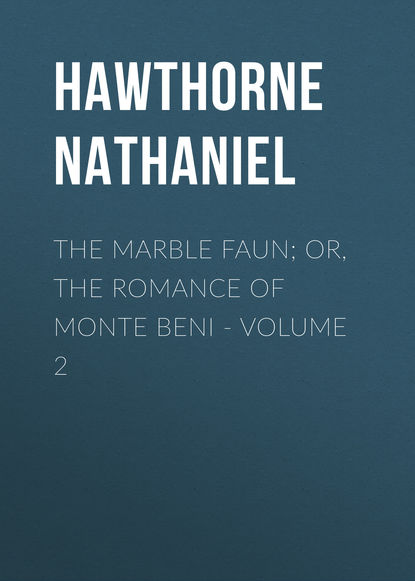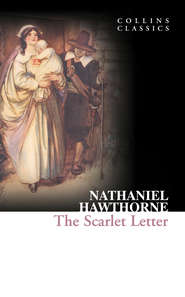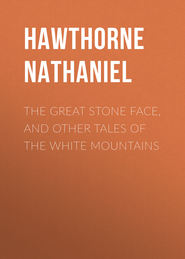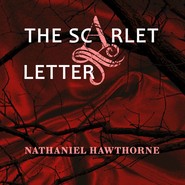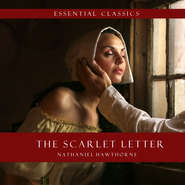По всем вопросам обращайтесь на: info@litportal.ru
(©) 2003-2024.
✖
The Marble Faun; Or, The Romance of Monte Beni - Volume 2
Настройки чтения
Размер шрифта
Высота строк
Поля
An imaginative man, he suffered the penalty of his endowment in the hundred-fold variety of gloomily tinted scenes that it presented to him, in which Hilda was always a central figure. The sculptor forgot his marble. Rome ceased to be anything, for him, but a labyrinth of dismal streets, in one or another of which the lost girl had disappeared. He was haunted with the idea that some circumstance, most important to be known, and perhaps easily discoverable, had hitherto been overlooked, and that, if he could lay hold of this one clew, it would guide him directly in the track of Hilda’s footsteps. With this purpose in view, he went, every morning, to the Via Portoghese, and made it the starting-point of fresh investigations. After nightfall, too, he invariably returned thither, with a faint hope fluttering at his heart that the lamp might again be shining on the summit of the tower, and would dispel this ugly mystery out of the circle consecrated by its rays. There being no point of which he could take firm hold, his mind was filled with unsubstantial hopes and fears. Once Kenyon had seemed to cut his life in marble; now he vaguely clutched at it, and found it vapor.
In his unstrung and despondent mood, one trifling circumstance affected him with an idle pang. The doves had at first been faithful to their lost mistress. They failed not to sit in a row upon her window-sill, or to alight on the shrine, or the church-angels, and on the roofs and portals of the neighboring houses, in evident expectation of her reappearance. After the second week, however, they began to take flight, and dropping off by pairs, betook themselves to other dove-cotes. Only a single dove remained, and brooded drearily beneath the shrine. The flock that had departed were like the many hopes that had vanished from Kenyon’s heart; the one that still lingered, and looked so wretched, — was it a Hope, or already a Despair?
In the street, one day, the sculptor met a priest of mild and venerable aspect; and as his mind dwelt continually upon Hilda, and was especially active in bringing up all incidents that had ever been connected with her, it immediately struck him that this was the very father with whom he had seen her at the confessional. Such trust did Hilda inspire in him, that Kenyon had never asked what was the subject of the communication between herself and this old priest. He had no reason for imagining that it could have any relation with her disappearance, so long subsequently; but, being thus brought face to face with a personage, mysteriously associated, as he now remembered, with her whom he had lost, an impulse ran before his thoughts and led the sculptor to address him.
It might be that the reverend kindliness of the old man’s expression took Kenyon’s heart by surprise; at all events, he spoke as if there were a recognized acquaintanceship, and an object of mutual interest between them.
“She has gone from me, father,” said he.
“Of whom do you speak, my son?” inquired the priest.
“Of that sweet girl,” answered Kenyon, “who knelt to you at the confessional. Surely you remember her, among all the mortals to whose confessions you have listened! For she alone could have had no sins to reveal.”
“Yes; I remember,” said the priest, with a gleam of recollection in his eyes. “She was made to bear a miraculous testimony to the efficacy of the divine ordinances of the Church, by seizing forcibly upon one of them, and finding immediate relief from it, heretic though she was. It is my purpose to publish a brief narrative of this miracle, for the edification of mankind, in Latin, Italian, and English, from the printing press of the Propaganda. Poor child! Setting apart her heresy, she was spotless, as you say. And is she dead?”
“Heaven forbid, father!” exclaimed Kenyon, shrinking back. “But she has gone from me, I know not whither. It may be — yes, the idea seizes upon my mind — that what she revealed to you will suggest some clew to the mystery of her disappearance.’”
“None, my son, none,” answered the priest, shaking his head; “nevertheless, I bid you be of good cheer. That young maiden is not doomed to die a heretic. Who knows what the Blessed Virgin may at this moment be doing for her soul! Perhaps, when you next behold her, she will be clad in the shining white robe of the true faith.”
This latter suggestion did not convey all the comfort which the old priest possibly intended by it; but he imparted it to the sculptor, along with his blessing, as the two best things that he could bestow, and said nothing further, except to bid him farewell.
When they had parted, however, the idea of Hilda’s conversion to Catholicism recurred to her lover’s mind, bringing with it certain reflections, that gave a new turn to his surmises about the mystery into which she had vanished. Not that he seriously apprehended — although the superabundance of her religious sentiment might mislead her for a moment — that the New England girl would permanently succumb to the scarlet superstitions which surrounded her in Italy. But the incident of the confessional if known, as probably it was, to the eager propagandists who prowl about for souls, as cats to catch a mouse — would surely inspire the most confident expectations of bringing her over to the faith. With so pious an end in view, would Jesuitical morality be shocked at the thought of kidnapping the mortal body, for the sake of the immortal spirit that might otherwise be lost forever? Would not the kind old priest, himself, deem this to be infinitely the kindest service that he could perform for the stray lamb, who had so strangely sought his aid?
If these suppositions were well founded, Hilda was most likely a prisoner in one of the religious establishments that are so numerous in Rome. The idea, according to the aspect in which it was viewed, brought now a degree of comfort, and now an additional perplexity. On the one hand, Hilda was safe from any but spiritual assaults; on the other, where was the possibility of breaking through all those barred portals, and searching a thousand convent cells, to set her free?
Kenyon, however, as it happened, was prevented from endeavoring to follow out this surmise, which only the state of hopeless uncertainty, that almost bewildered his reason, could have led him for a moment to entertain. A communication reached him by an unknown hand, in consequence of which, and within an hour after receiving it, he took his way through one of the gates of Rome.
CHAPTER XLVI
A WALK ON THE CAMPAGNA
It was a bright forenoon of February; a month in which the brief severity of a Roman winter is already past, and when violets and daisies begin to show themselves in spots favored by the sun. The sculptor came out of the city by the gate of San Sebastiano, and walked briskly along the Appian Way.
For the space of a mile or two beyond the gate, this ancient and famous road is as desolate and disagreeable as most of the other Roman avenues. It extends over small, uncomfortable paving-stones, between brick and plastered walls, which are very solidly constructed, and so high as almost to exclude a view of the surrounding country. The houses are of most uninviting aspect, neither picturesque, nor homelike and social; they have seldom or never a door opening on the wayside, but are accessible only from the rear, and frown inhospitably upon the traveller through iron-grated windows. Here and there appears a dreary inn or a wine-shop, designated by the withered bush beside the entrance, within which you discern a stone-built and sepulchral interior, where guests refresh themselves with sour bread and goats’-milk cheese, washed down with wine of dolorous acerbity.
At frequent intervals along the roadside up-rises the ruin of an ancient tomb. As they stand now, these structures are immensely high and broken mounds of conglomerated brick, stone, pebbles, and earth, all molten by time into a mass as solid and indestructible as if each tomb were composed of a single boulder of granite. When first erected, they were cased externally, no doubt, with slabs of polished marble, artfully wrought bas-reliefs, and all such suitable adornments, and were rendered majestically beautiful by grand architectural designs. This antique splendor has long since been stolen from the dead, to decorate the palaces and churches of the living. Nothing remains to the dishonored sepulchres, except their massiveness.
Even the pyramids form hardly a stranger spectacle, or are more alien from human sympathies, than the tombs of the Appian Way, with their gigantic height, breadth, and solidity, defying time and the elements, and far too mighty to be demolished by an ordinary earthquake. Here you may see a modern dwelling, and a garden with its vines and olive-trees, perched on the lofty dilapidation of a tomb, which forms a precipice of fifty feet in depth on each of the four sides. There is a home on that funereal mound, where generations of children have been born, and successive lives been spent, undisturbed by the ghost of the stern Roman whose ashes were so preposterously burdened. Other sepulchres wear a crown of grass, shrubbery, and forest-trees, which throw out a broad sweep of branches, having had time, twice over, to be a thousand years of age. On one of them stands a tower, which, though immemorially more modern than the tomb, was itself built by immemorial hands, and is now rifted quite from top to bottom by a vast fissure of decay; the tomb-hillock, its foundation, being still as firm as ever, and likely to endure until the last trump shall rend it wide asunder, and summon forth its unknown dead.
Yes; its unknown dead! For, except in one or two doubtful instances, these mountainous sepulchral edifices have not availed to keep so much as the bare name of an individual or a family from oblivion. Ambitious of everlasting remembrance, as they were, the slumberers might just as well have gone quietly to rest, each in his pigeon-hole of a columbarium, or under his little green hillock in a graveyard, without a headstone to mark the spot. It is rather satisfactory than otherwise, to think that all these idle pains have turned out so utterly abortive.
About two miles, or more, from the city gate, and right upon the roadside, Kenyon passed an immense round pile, sepulchral in its original purposes, like those already mentioned. It was built of great blocks of hewn stone, on a vast, square foundation of rough, agglomerated material, such as composes the mass of all the other ruinous tombs. But whatever might be the cause, it was in a far better state of preservation than they. On its broad summit rose the battlements of a mediaeval fortress, out of the midst of which (so long since had time begun to crumble the supplemental structure, and cover it with soil, by means of wayside dust) grew trees, bushes, and thick festoons of ivy. This tomb of a woman had become the citadel and donjon-keep of a castle; and all the care that Cecilia Metella’s husband could bestow, to secure endless peace for her beloved relics, had only sufficed to make that handful of precious ashes the nucleus of battles, long ages after her death.
A little beyond this point, the sculptor turned aside from the Appian Way, and directed his course across the Campagna, guided by tokens that were obvious only to himself. On one side of him, but at a distance, the Claudian aqueduct was striding over fields and watercourses. Before him, many miles away, with a blue atmosphere between, rose the Alban hills, brilliantly silvered with snow and sunshine.
He was not without a companion. A buffalo-calf, that seemed shy and sociable by the selfsame impulse, had begun to make acquaintance with him, from the moment when he left the road. This frolicsome creature gambolled along, now before, now behind; standing a moment to gaze at him, with wild, curious eyes, he leaped aside and shook his shaggy head, as Kenyon advanced too nigh; then, after loitering in the rear, he came galloping up, like a charge of cavalry, but halted, all of a sudden, when the sculptor turned to look, and bolted across the Campagna at the slightest signal of nearer approach. The young, sportive thing, Kenyon half fancied, was serving him as a guide, like the heifer that led Cadmus to the site of his destined city; for, in spite of a hundred vagaries, his general course was in the right direction, and along by several objects which the sculptor had noted as landmarks of his way.
In this natural intercourse with a rude and healthy form of animal life, there was something that wonderfully revived Kenyon’s spirits. The warm rays of the sun, too, were wholesome for him in body and soul; and so was a breeze that bestirred itself occasionally, as if for the sole purpose of breathing upon his cheek and dying softly away, when he would fain have felt a little more decided kiss. This shy but loving breeze reminded him strangely of what Hilda’s deportment had sometimes been towards himself.
The weather had very much to do, no doubt, with these genial and delightful sensations, that made the sculptor so happy with mere life, in spite of a head and heart full of doleful thoughts, anxieties, and fears, which ought in all reason to have depressed him. It was like no weather that exists anywhere, save in Paradise and in Italy; certainly not in America, where it is always too strenuous on the side either of heat or cold. Young as the season was, and wintry, as it would have been under a more rigid sky, it resembled summer rather than what we New Englanders recognize in our idea of spring. But there was an indescribable something, sweet, fresh, and remotely affectionate, which the matronly summer loses, and which thrilled, and, as it were, tickled Kenyon’s heart with a feeling partly of the senses, yet far more a spiritual delight. In a word, it was as if Hilda’s delicate breath were on his cheek.
After walking at a brisk pace for about half an hour, he reached a spot where an excavation appeared to have been begun, at some not very distant period. There was a hollow space in the earth, looking exceedingly like a deserted cellar, being enclosed within old subterranean walls, constructed of thin Roman bricks, and made accessible by a narrow flight of stone steps. A suburban villa had probably stood over this site, in the imperial days of Rome, and these might have been the ruins of a bathroom, or some other apartment that was required to be wholly or partly under ground. A spade can scarcely be put into that soil, so rich in lost and forgotten things, without hitting upon some discovery which would attract all eyes, in any other land. If you dig but a little way, you gather bits of precious marble, coins, rings, and engraved gems; if you go deeper, you break into columbaria, or into sculptured and richly frescoed apartments that look like festive halls, but were only sepulchres.
The sculptor descended into the cellar-like cavity, and sat down on a block of stone. His eagerness had brought him thither sooner than the appointed hour. The sunshine fell slantwise into the hollow, and happened to be resting on what Kenyon at first took to be a shapeless fragment of stone, possibly marble, which was partly concealed by the crumbling down of earth.
But his practised eye was soon aware of something artistic in this rude object. To relieve the anxious tedium of his situation, he cleared away some of the soil, which seemed to have fallen very recently, and discovered a headless figure of marble. It was earth stained, as well it might be, and had a slightly corroded surface, but at once impressed the sculptor as a Greek production, and wonderfully delicate and beautiful. The head was gone; both arms were broken off at the elbow. Protruding from the loose earth, however, Kenyon beheld the fingers of a marble hand; it was still appended to its arm, and a little further search enabled him to find the other. Placing these limbs in what the nice adjustment of the fractures proved to be their true position, the poor, fragmentary woman forthwith showed that she retained her modest instincts to the last. She had perished with them, and snatched them back at the moment of revival. For these long-buried hands immediately disposed themselves in the manner that nature prompts, as the antique artist knew, and as all the world has seen, in the Venus de’ Medici.
“What a discovery is here!” thought Kenyon to himself. “I seek for Hilda, and find a marble woman! Is the omen good or ill?”
In a corner of the excavation lay a small round block of stone, much incrusted with earth that had dried and hardened upon it. So, at least, you would have described this object, until the sculptor lifted it, turned it hither and thither in his hands, brushed off the clinging soil, and finally placed it on the slender neck of the newly discovered statue. The effect was magical. It immediately lighted up and vivified the whole figure, endowing it with personality, soul, and intelligence. The beautiful Idea at once asserted its immortality, and converted that heap of forlorn fragments into a whole, as perfect to the mind, if not to the eye, as when the new marble gleamed with snowy lustre; nor was the impression marred by the earth that still hung upon the exquisitely graceful limbs, and even filled the lovely crevice of the lips. Kenyon cleared it away from between them, and almost deemed himself rewarded with a living smile.
It was either the prototype or a better repetition of the Venus of the Tribune. But those who have been dissatisfied with the small head, the narrow, soulless face, the button-hole eyelids, of that famous statue, and its mouth such as nature never moulded, should see the genial breadth of this far nobler and sweeter countenance. It is one of the few works of antique sculpture in which we recognize womanhood, and that, moreover, without prejudice to its divinity.
Here, then, was a treasure for the sculptor to have found! How happened it to be lying there, beside its grave of twenty centuries? Why were not the tidings of its discovery already noised abroad? The world was richer than yesterday, by something far more precious than gold. Forgotten beauty had come back, as beautiful as ever; a goddess had risen from her long slumber, and was a goddess still. Another cabinet in the Vatican was destined to shine as lustrously as that of the Apollo Belvedere; or, if the aged pope should resign his claim, an emperor would woo this tender marble, and win her as proudly as an imperial bride!
Such were the thoughts with which Kenyon exaggerated to himself the importance of the newly discovered statue, and strove to feel at least a portion of the interest which this event would have inspired in him a little while before. But, in reality, he found it difficult to fix his mind upon the subject. He could hardly, we fear, be reckoned a consummate artist, because there was something dearer to him than his art; and, by the greater strength of a human affection, the divine statue seemed to fall asunder again, and become only a heap of worthless fragments.
While the sculptor sat listlessly gazing at it, there was a sound of small hoofs, clumsily galloping on the Campagna; and soon his frisky acquaintance, the buffalo-calf, came and peeped over the edge of the excavation. Almost at the same moment he heard voices, which approached nearer and nearer; a man’s voice, and a feminine one, talking the musical tongue of Italy. Besides the hairy visage of his four footed friend, Kenyon now saw the figures of a peasant and a contadina, making gestures of salutation to him, on the opposite verge of the hollow space.
CHAPTER XLVII
THE PEASANT AND CONTADINA
They descended into the excavation: a young peasant, in the short blue jacket, the small-clothes buttoned at the knee, and buckled shoes, that compose one of the ugliest dresses ever worn by man, except the wearer’s form have a grace which any garb, or the nudity of an antique statue, would equally set off; and, hand in hand with him, a village girl, in one of those brilliant costumes largely kindled up with scarlet, and decorated with gold embroidery, in which the contadinas array themselves on feast-days. But Kenyon was not deceived; he had recognized the voices of his friends, indeed, even before their disguised figures came between him and the sunlight. Donatello was the peasant; the contadina, with the airy smile, half mirthful, though it shone out of melancholy eyes, — was Miriam.
They both greeted the sculptor with a familiar kindness which reminded him of the days when Hilda and they and he had lived so happily together, before the mysterious adventure of the catacomb. What a succession of sinister events had followed one spectral figure out of that gloomy labyrinth.
“It is carnival time, you know,” said Miriam, as if in explanation of Donatello’s and her own costume. “Do you remember how merrily we spent the Carnival, last year?”
“It seems many years ago,” replied Kenyon. “We are all so changed!”
When individuals approach one another with deep purposes on both sides, they seldom come at once to the matter which they have most at heart. They dread the electric shock of a too sudden contact with it. A natural impulse leads them to steal gradually onward, hiding themselves, as it were, behind a closer, and still a closer topic, until they stand face to face with the true point of interest. Miriam was conscious of this impulse, and partially obeyed it.
“So your instincts as a sculptor have brought you into the presence of our newly discovered statue,” she observed. “Is it not beautiful? A far truer image of immortal womanhood than the poor little damsel at Florence, world famous though she be.”
“Most beautiful,” said Kenyon, casting an indifferent glance at the Venus. “The time has been when the sight of this statue would have been enough to make the day memorable.”
“And will it not do so now?” Miriam asked.
“I fancied so, indeed, when we discovered it two days ago. It is Donatello’s prize. We were sitting here together, planning an interview with you, when his keen eyes detected the fallen goddess, almost entirely buried under that heap of earth, which the clumsy excavators showered down upon her, I suppose. We congratulated ourselves, chiefly for your sake. The eyes of us three are the only ones to which she has yet revealed herself. Does it not frighten you a little, like the apparition of a lovely woman that livid of old, and has long lain in the grave?”
“Ah, Miriam! I cannot respond to you,” said the sculptor, with irrepressible impatience. “Imagination and the love of art have both died out of me.”
“Miriam,” interposed Donatello with gentle gravity, “why should we keep our friend in suspense? We know what anxiety he feels. Let us give him what intelligence we can.”
“You are so direct and immediate, my beloved friend!” answered Miriam with an unquiet smile. “There are several reasons why I should like to play round this matter a little while, and cover it with fanciful thoughts, as we strew a grave with flowers.”
“A grave!” exclaimed the sculptor.





